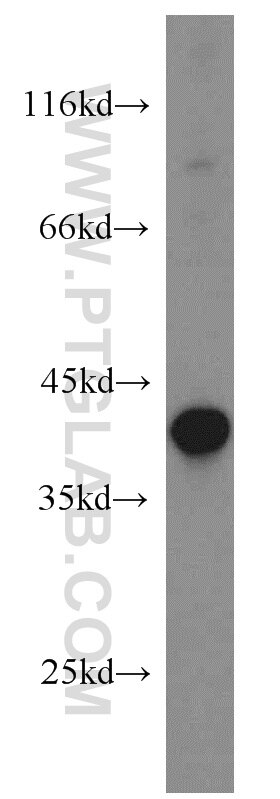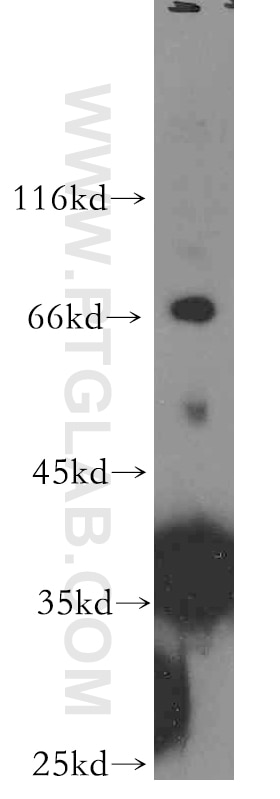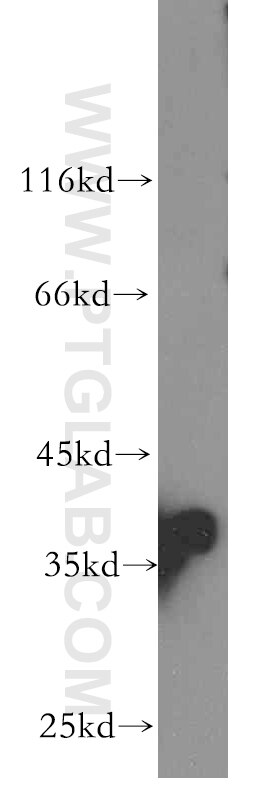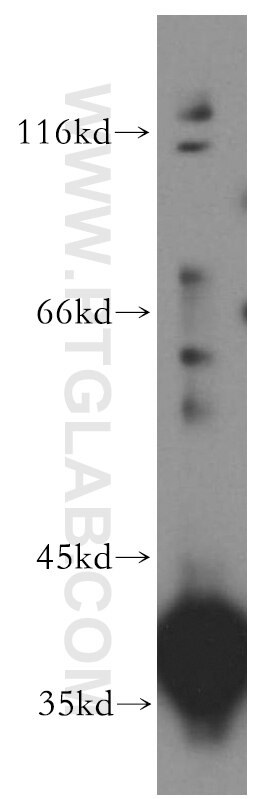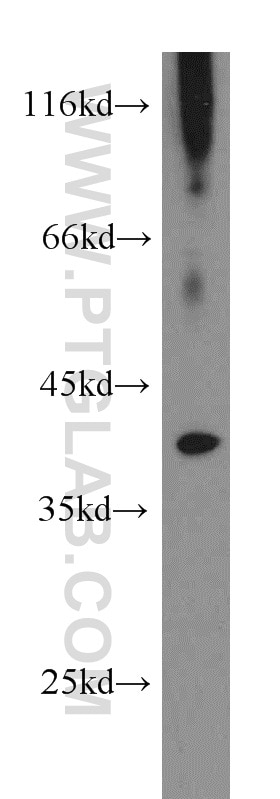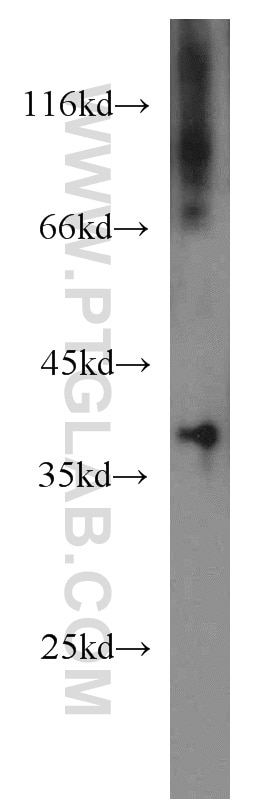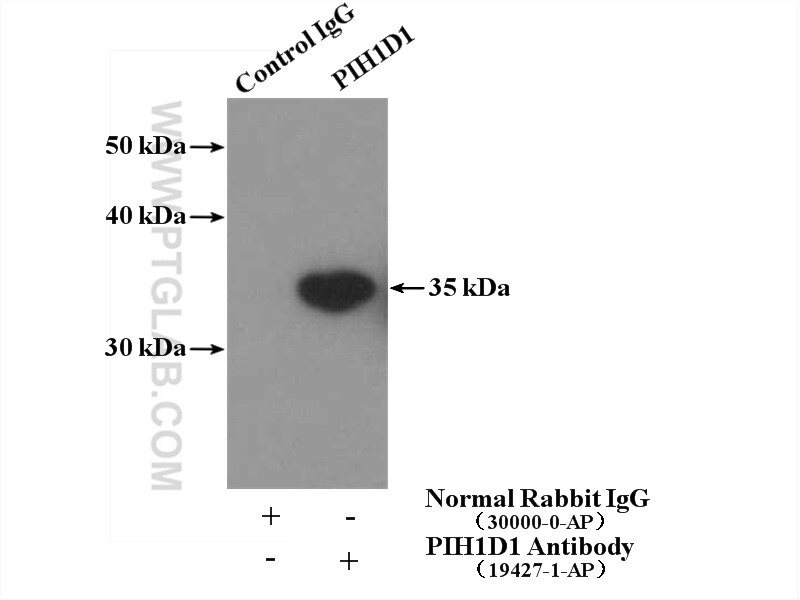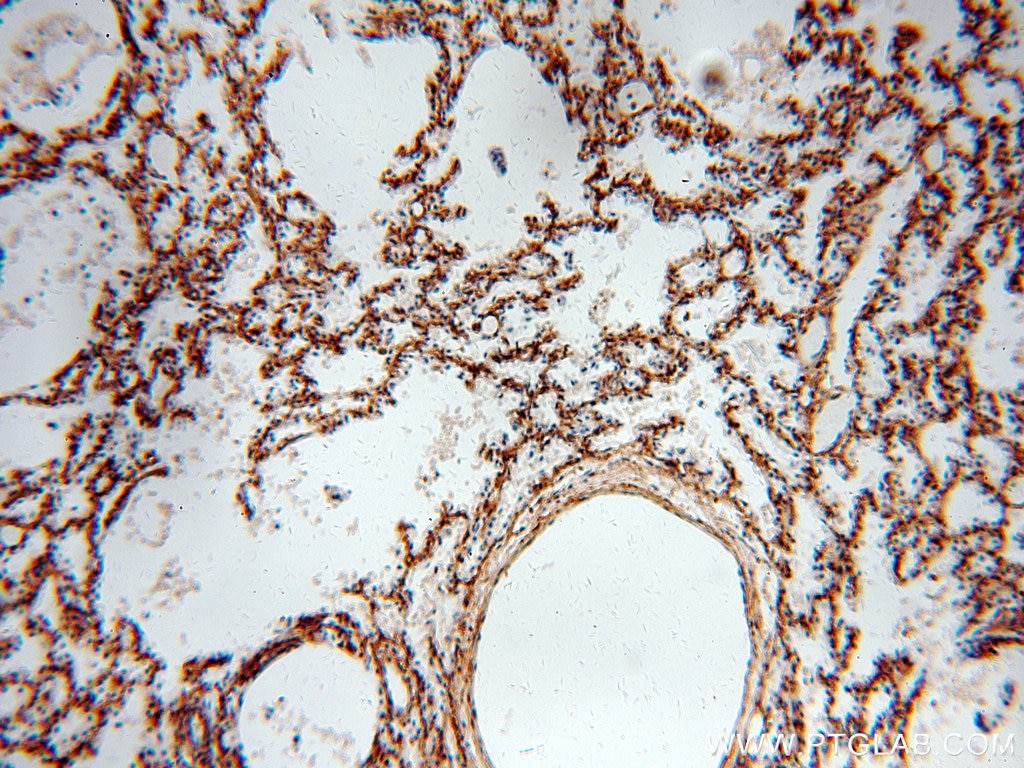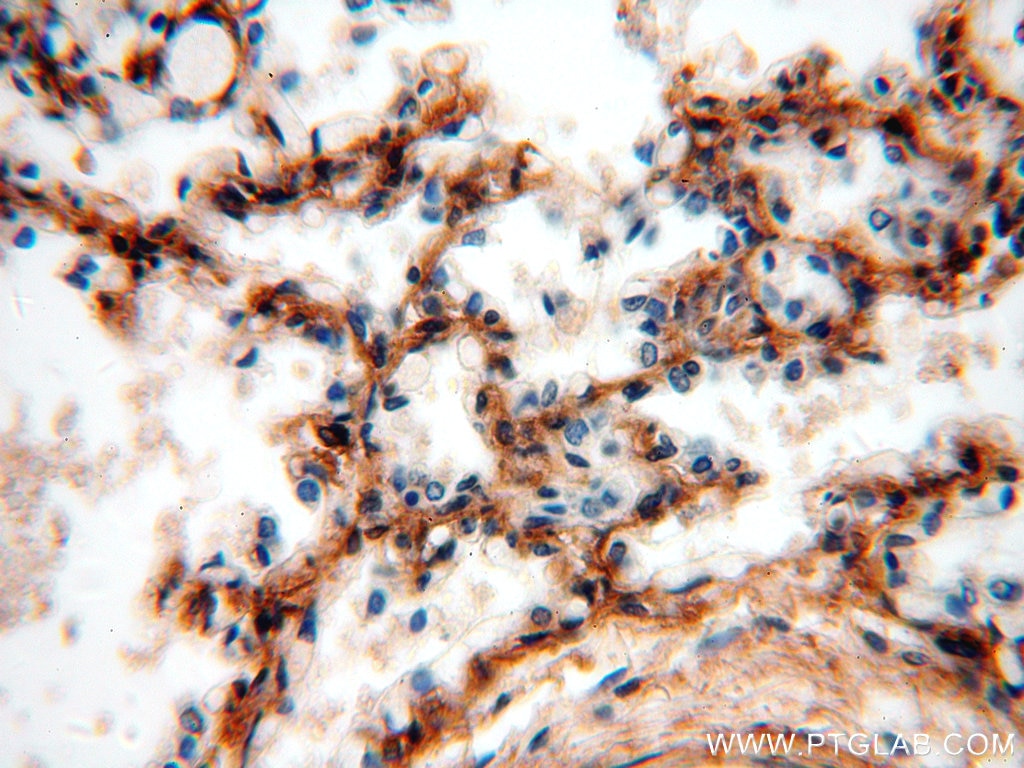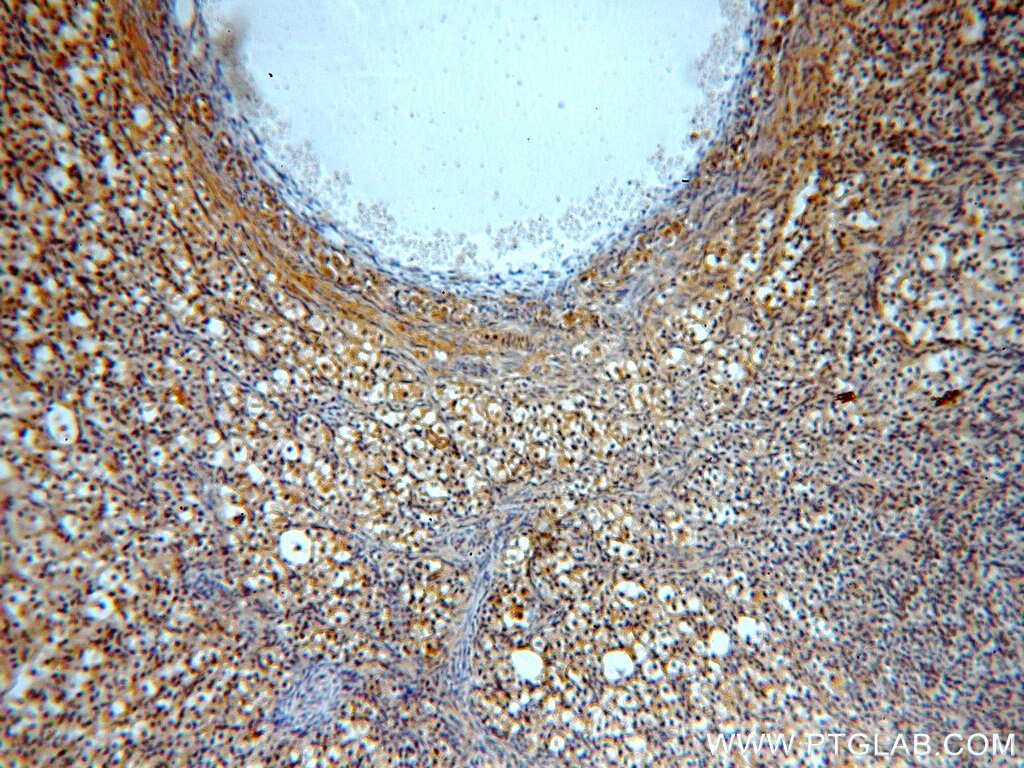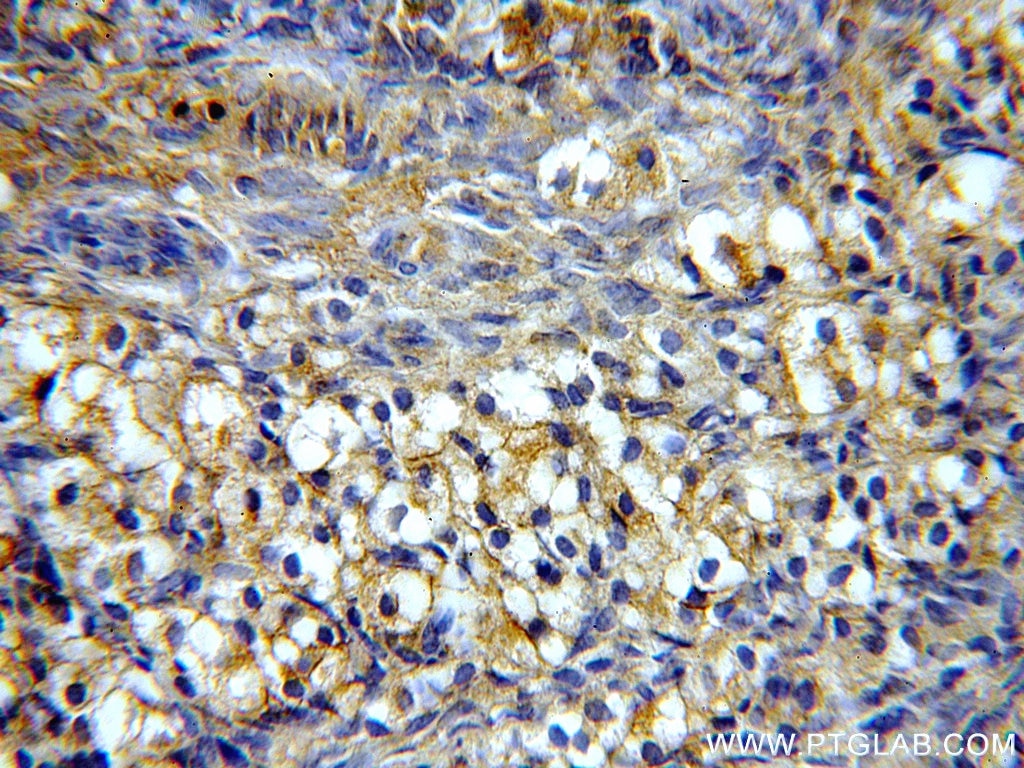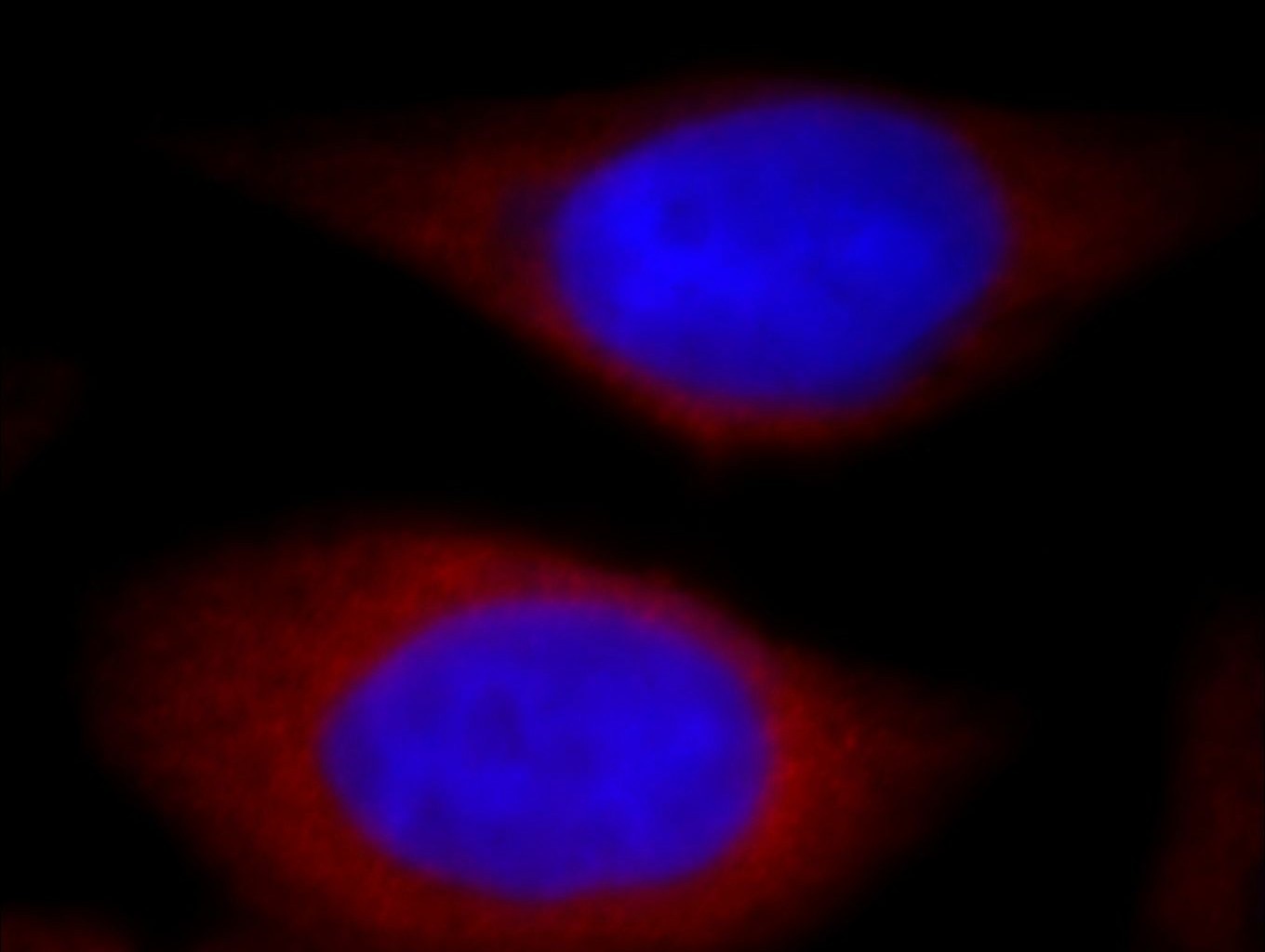PIH1D1 Polyklonaler Antikörper
PIH1D1 Polyklonal Antikörper für IF, IHC, IP, WB, ELISA
Wirt / Isotyp
Kaninchen / IgG
Getestete Reaktivität
human, Maus, Ratte
Anwendung
WB, IP, IHC, IF, CoIP, ELISA
Konjugation
Unkonjugiert
Kat-Nr. : 19427-1-AP
Synonyme
Galerie der Validierungsdaten
Geprüfte Anwendungen
| Erfolgreiche Detektion in WB | HeLa-Zellen, A431-Zellen, humanes Hodengewebe, humanes Uterusgewebe, Maus-Augengewebe, Maus-Eierstockgewebe |
| Erfolgreiche IP | HeLa-Zellen |
| Erfolgreiche Detektion in IHC | humanes Lungengewebe, humanes Eierstockgewebe Hinweis: Antigendemaskierung mit TE-Puffer pH 9,0 empfohlen. (*) Wahlweise kann die Antigendemaskierung auch mit Citratpuffer pH 6,0 erfolgen. |
| Erfolgreiche Detektion in IF | HeLa-Zellen |
Empfohlene Verdünnung
| Anwendung | Verdünnung |
|---|---|
| Western Blot (WB) | WB : 1:500-1:1000 |
| Immunpräzipitation (IP) | IP : 0.5-4.0 ug for 1.0-3.0 mg of total protein lysate |
| Immunhistochemie (IHC) | IHC : 1:20-1:200 |
| Immunfluoreszenz (IF) | IF : 1:10-1:100 |
| It is recommended that this reagent should be titrated in each testing system to obtain optimal results. | |
| Sample-dependent, check data in validation data gallery | |
Veröffentlichte Anwendungen
| WB | See 7 publications below |
| IHC | See 1 publications below |
| CoIP | See 1 publications below |
Produktinformation
19427-1-AP bindet in WB, IP, IHC, IF, CoIP, ELISA PIH1D1 und zeigt Reaktivität mit human, Maus, Ratten
| Getestete Reaktivität | human, Maus, Ratte |
| In Publikationen genannte Reaktivität | human, Maus, Ratte |
| Wirt / Isotyp | Kaninchen / IgG |
| Klonalität | Polyklonal |
| Typ | Antikörper |
| Immunogen | PIH1D1 fusion protein Ag13759 |
| Vollständiger Name | PIH1 domain containing 1 |
| Berechnetes Molekulargewicht | 290 aa, 32 kDa |
| Beobachtetes Molekulargewicht | 39 kDa |
| GenBank-Zugangsnummer | BC001108 |
| Gene symbol | PIH1D1 |
| Gene ID (NCBI) | 55011 |
| Konjugation | Unkonjugiert |
| Form | Liquid |
| Reinigungsmethode | Antigen-Affinitätsreinigung |
| Lagerungspuffer | PBS mit 0.02% Natriumazid und 50% Glycerin pH 7.3. |
| Lagerungsbedingungen | Bei -20°C lagern. Nach dem Versand ein Jahr lang stabil Aliquotieren ist bei -20oC Lagerung nicht notwendig. 20ul Größen enthalten 0,1% BSA. |
Hintergrundinformationen
PIH1D1 (PIH1 domain-containing protein 1; also known as PIH1 or NOP17), is a ortholog of the yeast nucleolar protein NOP17. PIH1D1 is a conserved subunit of the R2TP complex participating in the assembly of snoRNP and RNA polymerase II complexes. PIH1D1 may also function as a novel modulator of apoptosis pathway.
Protokolle
| Produktspezifische Protokolle | |
|---|---|
| WB protocol for PIH1D1 antibody 19427-1-AP | Protokoll herunterladen |
| IHC protocol for PIH1D1 antibody 19427-1-AP | Protokoll herunterladen |
| IF protocol for PIH1D1 antibody 19427-1-AP | Protokoll herunterladen |
| IP protocol for PIH1D1 antibody 19427-1-AP | Protokoll herunterladen |
| Standard-Protokolle | |
|---|---|
| Klicken Sie hier, um unsere Standardprotokolle anzuzeigen |
Publikationen
| Species | Application | Title |
|---|---|---|
Nat Commun The HSP90/R2TP assembly chaperone promotes cell proliferation in the intestinal epithelium. | ||
Front Cell Dev Biol PIH1D3-knockout rats exhibit full ciliopathy features and dysfunctional pre-assembly and loading of dynein arms in motile cilia | ||
Cell Chem Biol RUVBL1/RUVBL2 ATPase Activity Drives PAQosome Maturation, DNA Replication and Radioresistance in Lung Cancer. | ||
Chromosoma The PRDM9 KRAB domain is required for meiosis and involved in protein interactions. | ||
J Biol Chem Nrf1-mediated transcriptional regulation of the proteasome requires a functional TIP60 complex. |
